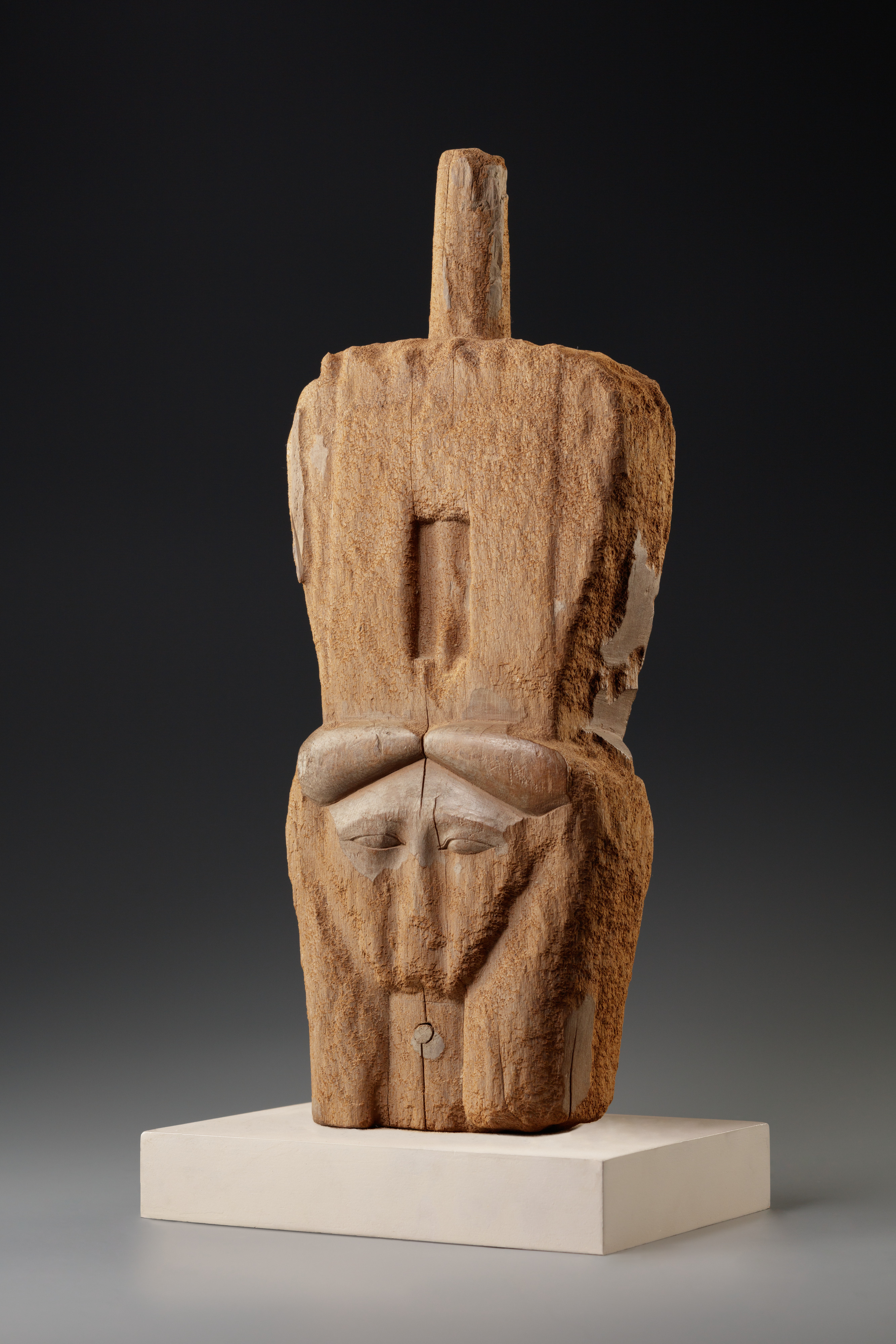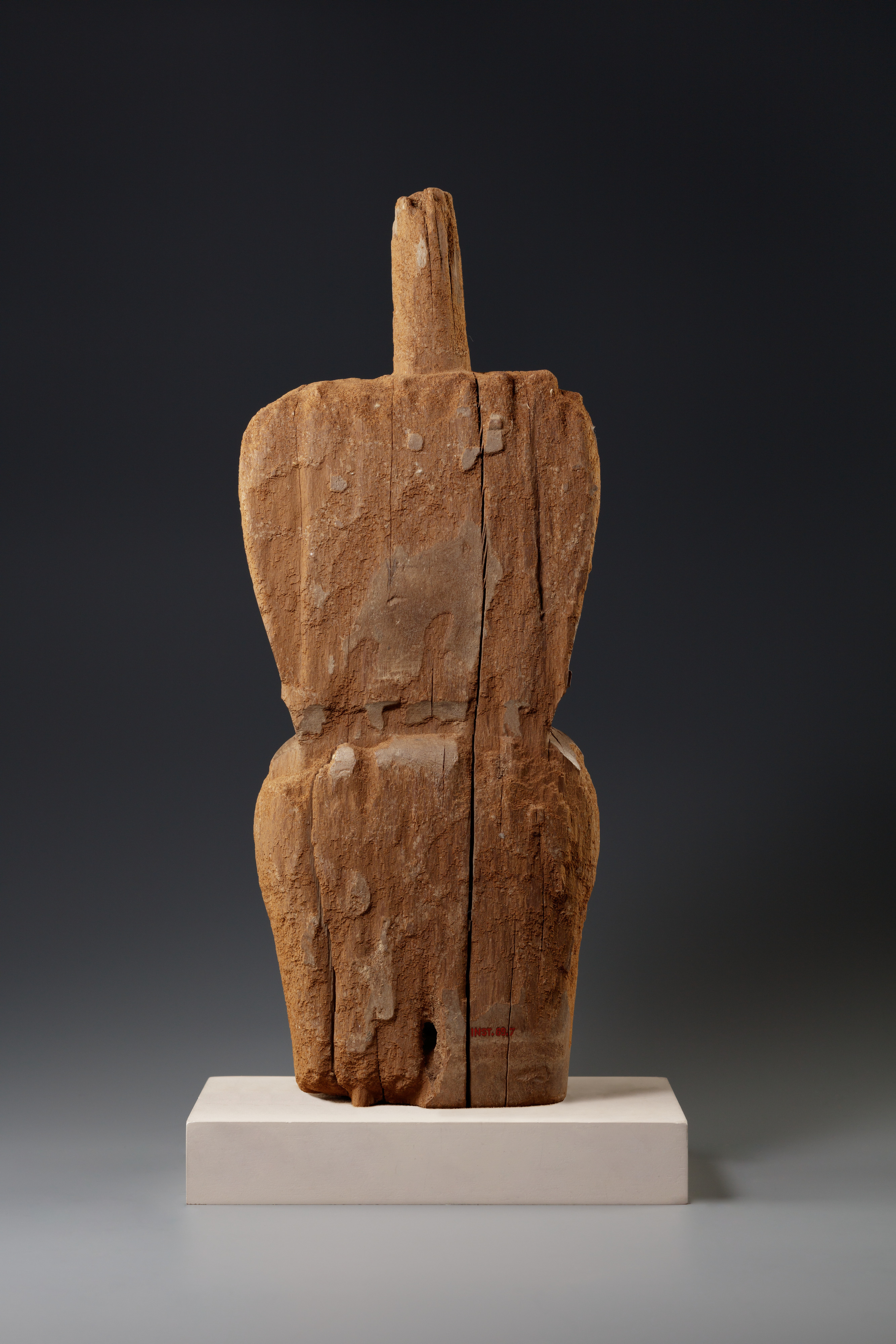Wooden Hathor column for a shrine
Late Period
Not on view
The Hathor emblem is closely associated with the sistrum: the frontal face with cow ears of the emblem frequently wears the sound box of a naos sistrum as its headdress. In architecture the emblem/sistrum inspires a particular form of a column or pillar with the Hathor emblem as its capital.
This wooden piece seems to be an element from a very small column. It has a face on only one side, the back is blank. The divine face wears a staight wig, with two thicker gatherings of hair over her forehead on either side of the part region. The remains of cow ears can be seen stretching out to the side of the temples. The goddess face is very angular, wide at the cheeks, peaked over the forehead, and flat at the jaws and again at the chin. She has long narrow eyes and her brows slant down toward the temples. Although eroded over much of its surface, the piece was originally very finely carved and polished. On the bottom of the piece is a wide slot where the stand is now inserted; originally the slot would have joined the head to another piece, possibly the papyrus umbel from which the Hathor emblem often rises. And at the top of the soundbox is a tenon that would have fit the emblem into an upper 'architrave' or rail of some kind. Small Hathor columns might have supported a shrine portico or a baldachin like those seen on the processional barks of some goddesses.
This Hathor emblem was found in a temple deposit at North Saqqara that we know was made about 343 BC. Temple deposits are repositories for sacred materials that are cleared out of the temple, and, since temple items could stand in the temple for many centuries, the objects therein can be very old and of widely mixed periods. This particular deposit at Saqqara held wooden temple objects, a substantial number of them going back as far as the 18th Dynasty - more than a thousand years earlier. Whether they had actually stood in a temple for so long or whether some other circumstance is at play is not clear.
It is not easy to specify the date of this piece, since Hathor's imagery is fairly consistent over a long period, but it likely dates to 1000-500 BC.
Due to rights restrictions, this image cannot be enlarged, viewed at full screen, or downloaded.
This artwork is meant to be viewed from right to left. Scroll left to view more.




